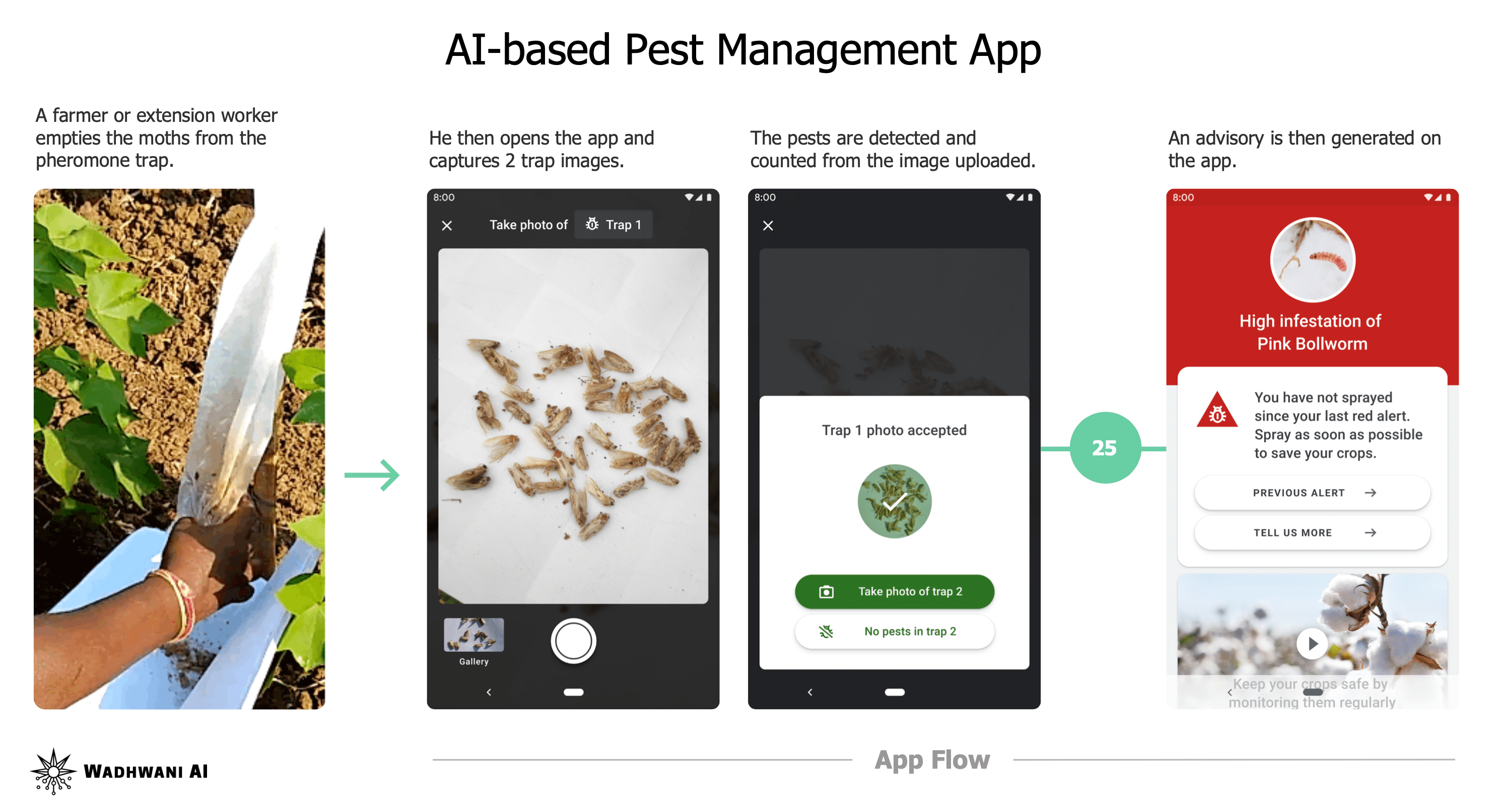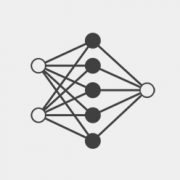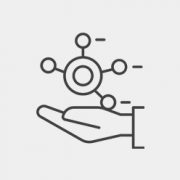The CottonAce solution guides cotton farmers on the optimal time to take preventive action and protect their farm against avoidable crop losses due to pests such as the Pink and American bollworm.

Cotton farming sustains the livelihoods of nearly 100 million people globally, yet productivity is often threatened by pests, diseases, and erratic weather. Among these, pest infestations, especially from the Pink Bollworm (PBW), pose the greatest risk. PBW alone accounts for up to 70% of pest-related crop damage and has developed resistance to commonly used cotton varieties, making it increasingly difficult to control.
Despite widespread use of chemical pesticides, pest-related crop losses can reach up to 30% annually. Traditional pest control methods, like manual counting, are time-consuming, prone to error, and difficult to scale, often resulting in delayed or inefficient pesticide application. Inaccurate or untimely data not only affects yields but also increases health and environmental risks for farming communities.
CottonAce addresses these challenges with an AI-powered early warning system accessible through a simple Android app. It enables timely, localized pest management decisions by identifying when and where spraying is necessary.

How It Works:
Lead Farmers install pheromone traps in their fields and use the CottonAce app to upload images of captured pests. The AI algorithm detects image quality, identifies the pest species, counts infestations using computer vision, and evaluates whether pest numbers exceed the Economic Threshold Limit (ETL). Based on this, the app provides immediate recommendations for pesticide spraying. These insights are shared with nearby farmers, who can take action without needing smartphones themselves.

Key Features:
Dashboard Capabilities:
Features of the dashboard

We use AI to detect and count pests on pheromone traps installed in cotton farms. The AI model first detects whether the image is of the appropriate type and quality through an input validation module, then identifies the type of pest and isolates each pest of that type by creating a bounding box around the pest. The model counts the number of bounding boxes and thus estimates the number of pests on the trap, which in turn is used to decide whether or not the count exceeds the Economic Threshold Limit (ETL), i.e., whether or not pesticide spraying is recommended. Since model inference and recommendation is carried out on a basic smartphone used by the farmer, the model’s memory footprint needs to be small. We therefore also use neural net pruning techniques to compress the model to a small size without significantly reducing accuracy. We continue experimenting with new methods to improve overall accuracy and compression.

Illustration of our machine learning model
Designed for ease of use and scalability, CottonAce enhances pest surveillance, supports quicker decision-making, and helps protect crops more effectively, transforming how cotton farmers manage infestations.

© 2025 Wadhwani AI
ROLES AND RESPONSIBILITIES
An ML Engineer at Wadhwani AI will be responsible for building robust machine learning solutions to problems of societal importance; usually under the guidance of senior ML scientists, and in collaboration with dedicated software engineers. To our partners, a Wadhwani AI solution is generally a decision making tool that requires some piece of data to engage. It will be your responsibility to ensure that the information provided using that piece of data is sound. This not only requires robust learned models, but pipelines over which those models can be built, tweaked, tested, and monitored. The following subsections provide details from the perspective of solution design:
Early stage of proof of concept (PoC)
Late PoC
This is early to mid-stage of AI product development
Post PoC
Responsibilities during production deployment
We realize this list is broad and extensive. While the ideal candidate has some exposure to each of these topics, we also envision great candidates being experts at some subset. If either of those cases happens to be you, please apply.
DESIRED QUALIFICATIONS
Master’s degree or above in a STEM field. Several years of experience getting their hands dirty applying their craft.
Programming

ROLES AND RESPONSIBILITIES
As an ML Scientist at Wadhwani AI, you will be responsible for building robust machine learning solutions to problems of societal importance, usually under the guidance of senior ML scientists. You will participate in translating a problem in the social sector to a well-defined AI problem, in the development and execution of algorithms and solutions to the problem, in the successful and scaled deployment of the AI solution, and in defining appropriate metrics to evaluate the effectiveness of the deployed solution.
In order to apply machine learning for social good, you will need to understand user challenges and their context, curate and transform data, train and validate models, run simulations, and broadly derive insights from data. In doing so, you will work in cross-functional teams spanning ML modeling, engineering, product, and domain experts. You will also interface with social sector organizations as appropriate.
REQUIREMENTS
Associate ML scientists will have a strong academic background in a quantitative field (see below) at the Bachelor’s or Master’s level, with project experience in applied machine learning. They will possess demonstrable skills in coding, data mining and analysis, and building and implementing ML or statistical models. Where needed, they will have to learn and adapt to the requirements imposed by real-life, scaled deployments.
Candidates should have excellent communication skills and a willingness to adapt to the challenges of doing applied work for social good.
DESIRED QUALIFICATIONS
